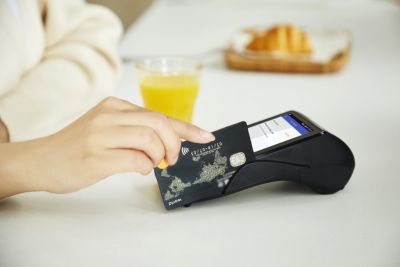To begin with the thought of how to save money- is a great start, when one thinks of proper money management. Imagine you slip your hands down your pocket and find few extra bucks of cash. That feels joyful to some of us- as you found some extra cash you never expected to have in the first place.
However, if you think deeper- that’s probably just your money- you never knew existed and you had never accounted for.
Saving money when done with a similar school of thought is quite joyful as well. Instead of cutting down on stuff and spendings, by making budgeted decisions- you keep an account for your money. Everything that’s left after your wise and practical budgeting is indeed that extra cash you found in your pocket.
Singapore is one of the most expensive cities to live in the world. While all the luxuries of this city state can be expensive on the pockets- but if you are smart and well planned- you can follow some strategies to save money in Singapore.
We at Moneysigma think, saving money need not come with a negative feeling but is helpful when done with a positive attitude of being practical. Remember- Saving money starts with your mindset.So don’t let it be a negative feeling my friends.
With that attitude of saving money, let us explore few practical ways of saving money done right.
1. It starts with a simple budget. Get started with a 50/30/20 budget to save money
Budgeting helps you analyse what you have and what you can spend. To begin with- you need not over complicate this process. A simple quick allocation will get you started.
We recommend to begin with the 50/30/20 budget rule for smarter management of your money. The 50/ 30/ 20 rule of budgeting goes like this- You allocate 50% of your income to necessities, 30% towards your wants and 20% to savings.
Some of us are confused by necessities and wants and often overlap their definitions-some of us knowingly. Necessities includes the basics without which your life becomes difficult to live with- They include necessary food, clothing and shelter. Wants are something which you do not necessarily need, but is something you desire.
As you start accumulating your savings- put them into good high returns savings account or cash deposits. These savings are easy to liquidate asset and also forms a part of emergency fund. This brings us to our second tip of automating your savings.
Find our 50 /30 /20 Budget Calculator here to easily calculate your income allotments.
2. Make every dollar count in your budget.
For beginners who have never planned a budget before- this method has worked wonders for people and got them out of debts. The idea is to assign every dollar in your income stream a job and none is left for you to spend hastily later.
It begins with identifying all the various categories you expect your spendings for the upcoming month. Assign some budget for each of those categories.
Try to plan for most of your spending categories. You need not stress yourselves if you can’t categories them all. Revisit this every time you have a new one in the upcoming month. Remember – savings/ debt payment etc., is also a spending category. So basically- you are assigning some money from your budget to savings and paying of debts.
Every time you get your income- move money from the main income to each of these categories. Pay and assign every dollar somewhere with none left for hasty spending.
{% image 'images/MoneySigma_EveryDollarAJobApproach.jpg', 'Moneysigma every dollar counts' %}
With this method of making every dollar do a job- you remain well aligned on pre planned budgets.
This method of budgeting is also popular and can be planned with this software YNAB. YNAB is a paid subscription. Alternatively you can also use a spreadsheet for the same purposes.
3. Open a second Savings account and automate to save money to this account.
Many of us usually begin with just one bank account and manage everything out of the same account. Access to the entire funds sitting in your sole account gives you the liberty to spend funds as and when you wish. With your savings being part of the whole lump sum you do not have a clear idea about limits of your spending.
For e.g., Say you have 10,000 dollars in your bank account- however, over the span of last few months you had allocated 4,000 dollars out of these as ‘savings’. So in reality- you have 6,000 dollars left in your spending power. However- when all of these 10,000 dollars sit in the same account- every time you see the balance, you feel you have 10,000 to spend and thus it gives you a false impression of your spending limits.
Opening a second savings account and automating your savings there, keeps the savings virtually out of your daily sight. Most banks like DBS, POSB , UOB, OCBC , Standard Chartered Singapore etc., allow you to easily open a second bank account online without much documentation. Some also allow you to open your first account online- using verification by MyInfo powered by SingPass. All of this-without visiting the bank.
4. Have short term savings goals
When you plan to save for the future- the fruits of your work seem far and thus one may loose motivation to save when you don’t see the benefits instantly. When you plan a short term savings plan- you end up saving towards a weekly and monthly goal which is easier to achieve and hence more achievable. Say for e.g., save a dollar or five very day or every time you make a transaction. You see about 30 dollars to 150 dollars at the end of month in your savings.
5. Prepare your grocery shopping before you visit the supermarket.
Making a list of stuffs you need to buy at the supermarket- before you enter, makes you stick to the plan and check off items from the list. This way you do not go on a shopping spree buying everything you see.
6. Time your major purchases
If you need to buy appliance, furnitures, electronics- timing your purchases to sales periods like Year End sales, Christmas sales, Black Friday, Chinese New Year sales etc will help you take advantage of various festive discounts. Do not buy anything hastily and take a day or two to limit your remorse on the purchase.
7. Restrict your online purchases.
When buying online- Do not fall for that “Buy NOW” button. Websites and apps are designed to get you to make purchases quickly and easily.
If you really are craving for that stuff- Add it to the shopping cart and sign out. Revisit it after a day or two and check if you still wish to buy that particular item. Usually the desire to buy stuffs dies – when left untouched for a while.
Some boutique websites and businesses also offer you discounts when they notice that you have items left in your cart.
8. Cancel unnecessary subscriptions
Over the span of time, we do end up signing up for various subscriptions and forget about them. Have a look through your monthly statements and check if you are still paying for subscription which you haven’t used for close to months. Go ahead and cancel them. Try opting for freemium or open source alternatives if it can get the job done.
9. Save your loose changes
Recall your child hood days when you collected small changes in your piggy bank. Little drops of water makes a might ocean, my friends ! Whenever you have small change- collect them in a piggy bank. May be you can treat yourselves or someone needy some day.
10. Save a share every time you spend on yourselves.
Every time you end up spending money on your wants, drop an equal or half of the same amount in your emergency fund. That way you do not feel guilty of your purchases.
11. Calculate your purchases by hours
When you are looking to purchase something, divide the cost of that particular item by your hourly income wage and ask yourselves if you would work for that many hours to earn that asset. When you realise the hours of work you had to put in to earn that much amount, the purchases sometimes do not seem worth it.
12. Stick a message on your credit card
Print or write “Do I really need to purchase this ?” on a paper and stick or leave it along with your credit card. Every time you take the card out- you will be reminded of something and have a chance to reconsider your purchase before you swipe. We have created some samples for you. Feel free to print them and keep it along with your credit cards.
Click here to download a free PDF version.
{% image 'images/MoneySigma_DoINeedToPurchaseThis_version1-1024x646.png', 'Stick this to credit card to save money' %}
If you are new to the world of credit cards, do make sure to learn about them and choose the best one that helps you manage the budget . Take care to not fall for credit cards that make you splurge more. Learn about the various types of credit cards and credit card rewards in Singapore.
13. Observe a No spend day
Mark a day on your calendar as a “No spend day”. If you can’t find one- remind yourselves of the day of the week you were born on. Let’s say it’s a Friday ? Every first Friday of the month shall be a no spend day ; ) Try to cook your own food, try not buying anything and no spending cash or swiping your card.
14. Pay your Credit card bills/ Other bills on time and on automated mode
It’s is quite known to most of us that the interest rates on credit cards are quite high. So, one miss of payment – results in a large interest. So trying to pay your credit card bills on time should be one of the high priorities for us. Try to set a recurring reminder on your calendar to pay it on time. If not, the best practice is to automate it or enable GIRO with the help of your banks.
Also when you default on other bills, some organisations may levy a fine on the upcoming ones. It’s a good practice to automate other utilities bills and save on any fines.
15. Plan and buy or make gifts in advance
Gifting to your colleagues at various ceremonies or your families and friends during festive seasons has become a norm. Usually gift items may get expensive during festive season. You may want to shop around during sales and stock them up for when you are expected to gift : )
Some of your immediate family and friends may appreciate hand made or hand written gifts over the factory made ones. If you are good at art, crafts, or can prep some home made gifts- consider doing that and save on costs.
16. Restaurant- Choose water over other beverages
When you visit restaurants or food courts, drinks are usually very expensive. They usually cost about 20 to 30% of your total meal price. The pricing model at restaurants sometimes rely on making a large share of revenue from extra drinks. Opt for water if its cheap. Also water is a healthier option compared to sugar infused drinks. Bottle your own water instead of buying one each time – if that’s allowed at the restaurants or the food courts you visit.
17. Cook your own food in bulk
Cooking in bulk sometimes can help you save on costs. It may also help you save time and the efforts required on after cooking chores like washing dishes, when its done in one go. Look up for various weekly meal prep plans and try your hand at it. If you are leaned towards the healthier version, try a hand at pickuplime.com recipes.
18. Avoid fast food
Even though fast food seems easy and cheap- avoid it whenever possible. On the long run, fast food does much damage to your health and you’ll end up paying a lot on your medical expenses. Some fast food gets you addicted to it and that’s not something good, my friends. Saving money need not come at a cost of your health.
19. For your own good Quit smoking /alcohol
Smoking and excessive consumption of alcohol costs a lot on the long run. Not to say- what it does to your health with addictions.
Check how much can you save if you quit smoking by using our quit smoking savings calculator here.
20. Check on your utilities and cell phone plans
Monitor your electricity usage and find ways to save on those. You can opt for other providers (if that makes economic sense) or cut down on unnecessary always on gadgets. Switch off appliances and systems when not in use.
Opt for less costly cellphone plans if possible to save money. Try bundling up your telecom and internet together if your telco provider has an overall discount for doing so.
Household spends
21. Weatherproof your house
Singapore’s weather stays quite warmer and humid through out the year. We spend a lot on air cons electric consumptions and maintenance.In order to fight this use techniques like keeping the blinds and windows closed to insulate the house naturally. Reduce use of air cons to regulate the temperature.
Fix leaks in your windows and doors to better insulate the area. An easy trick is to light a candle and move it around the door and window frames in your home by closing them. If it flickers there is a flow of air coming in.
22. Check on water usage to save money
Leaking water costs you more than you think. Even though it might seem as a small leak, a leaking tap can cause thousands of litres of water to be wasted yearly.
Inspect water taps, toilet bowls, hidden corners under the kitchen etc and make sure there are no signs of leakage. Regular maintenance and cleaning will help you save money on the long run.
23. Install LEDs instead of traditional lighting.
Energy-efficient light bulbs might cost a bit more initially, but they have a much longer life than normal incandescent bulbs and use far less electricity. LEDs are expensive, however they are getting cheaper day by day. LEDs can last for decades. Checking on lightings and your electricity usages will help you save money as well.
24. Clean closet/ wardrobes- rearrange clothing. Sell unwanted collectibles
If you have regular urge of buying clothes- revisit your wardrobes regularly and check what you already own. Rearrange clothing- bring the clothes hanging behind – ahead in the view and try them out. Sell/ Donate unwanted stuffs. Recycling through your wardrobes might also help you save money by stopping your urge of shopping for new clothing.
Check on various unwanted gadgets, shoes, accessories etc that you may own and list them up for sale. Various websites like ebay.com or carousell.com will help you sell your items.
Transportation
25. Check on your vehicle insurance costs
Check on your vehicle insurance premium- if you own a vehicle. Do not auto renew if its costly and do shop around to get the best deal. Some insurers increase their renewal premium. The increments on premiums are also related to your vehicle age and other factors. However it is always best to check around and see if you can save money. We have also compiled a must see list of ways to save on your car or motorcycle insurance premium here.
26. Maintain your vehicles to save money
Regularly inspect and maintain your vehicles. This helps cut down on costs due to wear and tear. Instead of waiting for something to break down and incurring more unwanted costs, following a monthly schedule of maintenance will help save money.
27.Use public transport if its cost effective.
Public transport in Singapore is very efficient and is cost effective compared to other countries. Agreed – MRT has its own breakdowns history, but overall it would be a good money saving strategy in Singapore- to opt for public transport than owning your own vehicle.
Check on the costs of owning a vehicle, it’s insurance, fuel and maintenance to the number of public transport rides you can check if it makes more sense for your economics. If opting for public transport helps you save money do so. However, if you do need a vehicle for very frequent travels and use it regularly for family and kids- opting for your own transport might make more sense.
Remember, money saving is not about cutting down- but being smart about it. It’s about being intelligent and optimising the flow. Make the right money moves my friends !



